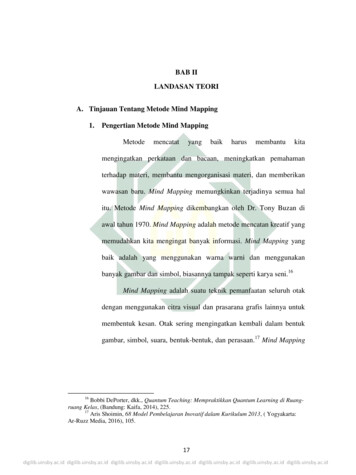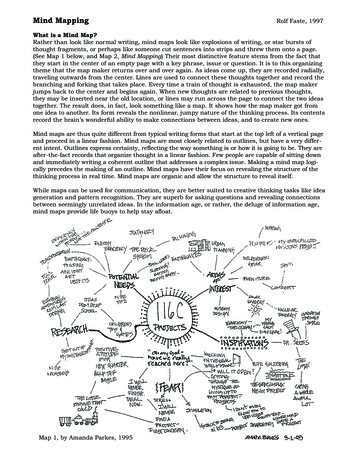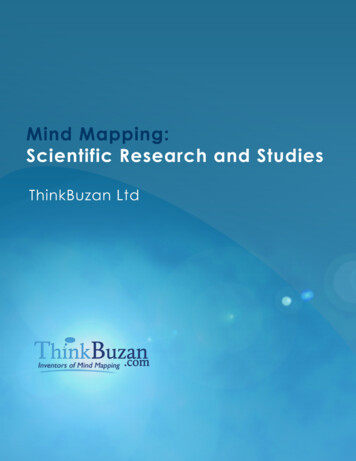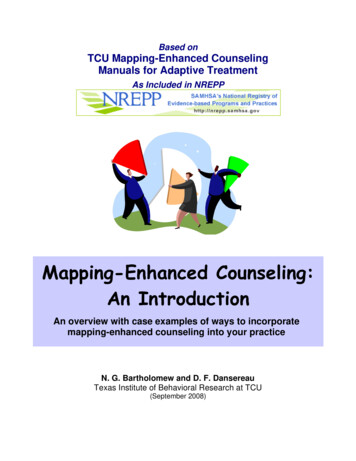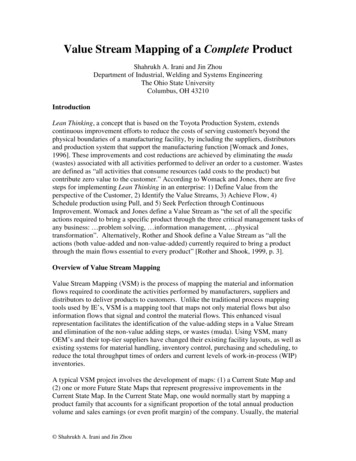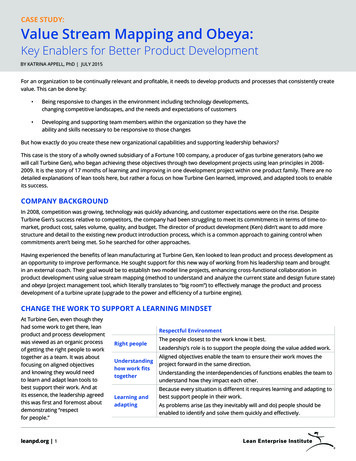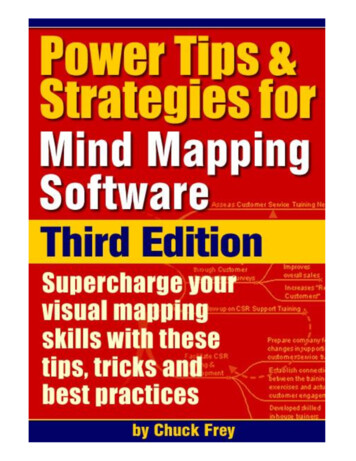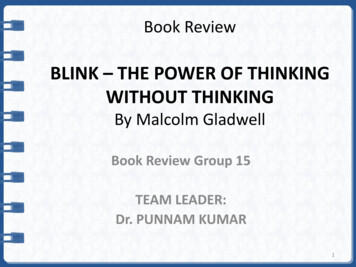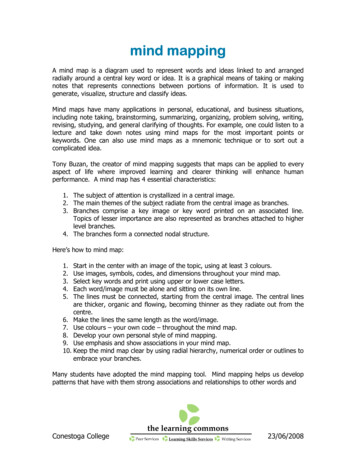
Transcription
mind mappingA mind map is a diagram used to represent words and ideas linked to and arrangedradially around a central key word or idea. It is a graphical means of taking or makingnotes that represents connections between portions of information. It is used togenerate, visualize, structure and classify ideas.Mind maps have many applications in personal, educational, and business situations,including note taking, brainstorming, summarizing, organizing, problem solving, writing,revising, studying, and general clarifying of thoughts. For example, one could listen to alecture and take down notes using mind maps for the most important points orkeywords. One can also use mind maps as a mnemonic technique or to sort out acomplicated idea.Tony Buzan, the creator of mind mapping suggests that maps can be applied to everyaspect of life where improved learning and clearer thinking will enhance humanperformance. A mind map has 4 essential characteristics:1. The subject of attention is crystallized in a central image.2. The main themes of the subject radiate from the central image as branches.3. Branches comprise a key image or key word printed on an associated line.Topics of lesser importance are also represented as branches attached to higherlevel branches.4. The branches form a connected nodal structure.Here’s how to mind map:1.2.3.4.5.Start in the center with an image of the topic, using at least 3 colours.Use images, symbols, codes, and dimensions throughout your mind map.Select key words and print using upper or lower case letters.Each word/image must be alone and sitting on its own line.The lines must be connected, starting from the central image. The central linesare thicker, organic and flowing, becoming thinner as they radiate out from thecentre.6. Make the lines the same length as the word/image.7. Use colours – your own code – throughout the mind map.8. Develop your own personal style of mind mapping.9. Use emphasis and show associations in your mind map.10. Keep the mind map clear by using radial hierarchy, numerical order or outlines toembrace your branches.Many students have adopted the mind mapping tool. Mind mapping helps us developpatterns that have with them strong associations and relationships to other words andConestoga College23/06/2008
concepts. The use of colours, diagrams and codes only reinforces the patterns and helpus to remember them.All sample maps have come from: http://www.topicscape.com/mindmaps/1. Effective time management2. How to mind mapConestoga College23/06/2008
3. The greenhouse effect4. About social softwareConestoga College23/06/2008
5. About computer science6. About laws of motionConestoga College23/06/2008
7. Map of a lecture8. Map of reading strategiesConestoga College23/06/2008
9. Mind map of mapping applicationsFor further information on mind mapping, the following resources are highlyrecommended.Conestoga College23/06/2008
Tony Buzan, the creator of mind mapping suggests that maps can be applied to every aspect of life where improved learning and clearer thinking will enhance human performance. A mind map has 4 essential characteristics: 1. The
